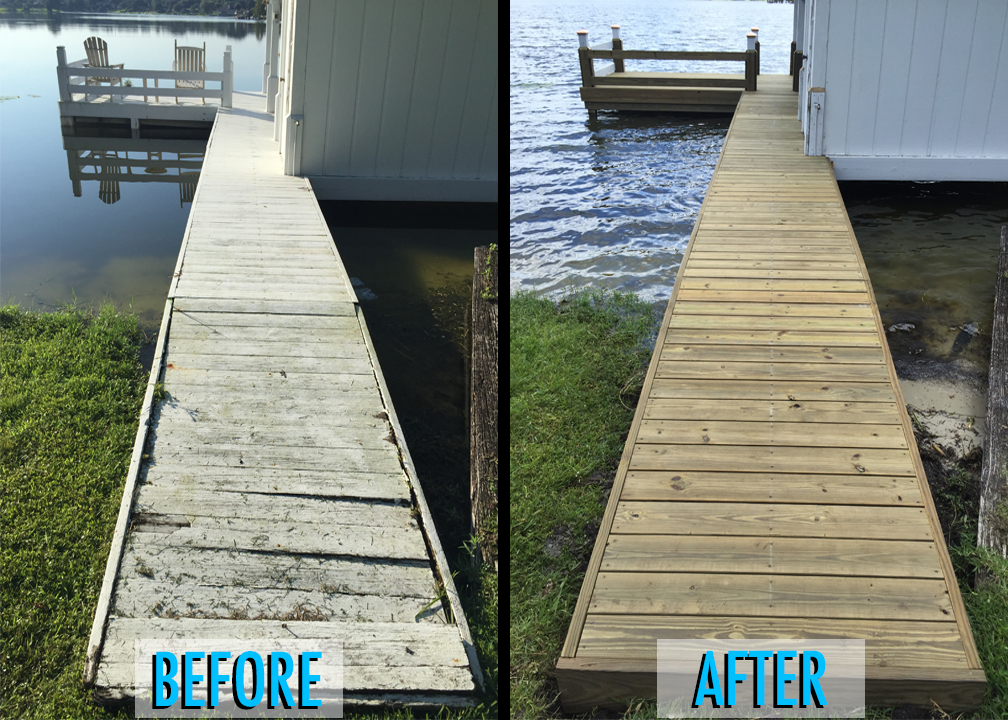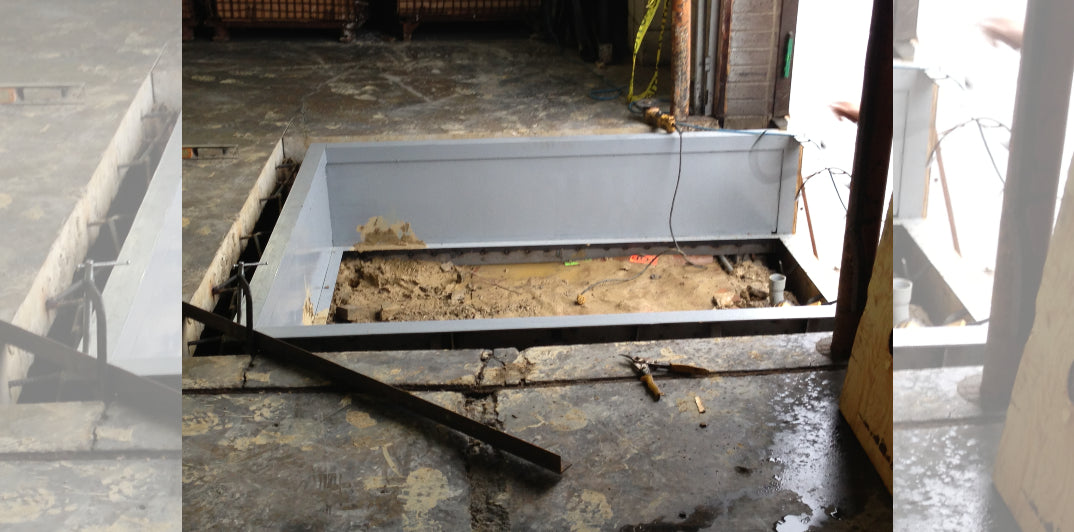Common Concerns That Cause Costly Dock Repairs
Common Concerns That Cause Costly Dock Repairs
Blog Article
Reliable Dock Repair Service Techniques: Making Certain Structural Integrity
Making certain the structural honesty of anchors with effective fixing techniques is critical for the long life and safety of aquatic centers. Ultimately, picking the best repair work products, such as corrosion-resistant alloys and composite products, is vital for longevity.
Evaluating Dock Damage
Analyzing dock damage is a critical primary step in making sure the architectural stability and safety of any kind of docking facility. This preliminary examination entails a detailed inspection to identify both noticeable and concealed damages. Trick facets to take a look at include the dock's foundation, pilings, outdoor decking, and equipment. Each component needs to be looked at for signs of wear, rot, rust, or other forms of destruction that might jeopardize the architectural honesty.
Architectural designers or certified inspectors commonly carry out these evaluations making use of specialized tools and methods. Underwater evaluations might employ finder devices or remotely operated vehicles (ROVs) to detect immersed damages. Over water, visual assessments are enhanced by utilizing moisture meters and various other diagnostic devices to discover underlying issues not quickly noticeable to the naked eye.

Finding Repair Products
Picking the ideal repair products is a pivotal action in the dock remediation procedure, one that straight affects the durability and efficiency of the fixed structure. Material option should be driven by elements such as environmental conditions, load-bearing demands, and compatibility with existing dock elements. For circumstances, wood is a conventional option for anchors because of its all-natural resilience and aesthetic charm. Choosing the right type of wood, such as pressure-treated lumber or naturally rot-resistant species like cedar or teak, is critical to stand up to aquatic settings.
In enhancement to timber, composite products are significantly popular because of their sturdiness and low upkeep demands. Compounds, usually made from a blend of plastic and wood fibers, supply outstanding resistance to rot, bugs, and UV damage. For metal anchors, choosing corrosion-resistant alloys such as galvanized steel or marine-grade light weight aluminum is necessary to protect against rust and make certain architectural stability in saline water conditions.
Epoxy resins and marine-grade sealants are essential for repairing splits and sealing joints, supplying a water-proof obstacle and boosting the dock's general toughness. By thoroughly picking high-grade materials, dock fixings can achieve resilient outcomes, thereby protecting against future deterioration and ensuring safe, reputable use.
Architectural Support Techniques
Effective structural reinforcement strategies are crucial in guaranteeing the stability and longevity of dock repair work. One fundamental technique involves making use of steel or composite reinforcement bars (rebar) within concrete frameworks. Rebar offers additional tensile stamina, avoiding splits and dispersing lots extra uniformly. This approach is especially efficient for anchors exposed to heavy loads or extreme environmental problems.
An additional essential strategy is the application of fiber-reinforced polymers (FRP) These materials supply high strength-to-weight ratios and outstanding resistance to corrosion, making them excellent for reinforcing wood or concrete docks. FRP can be applied in sheets or strips and adhered with epoxy materials to boost architectural stability.
Bracing and securing systems likewise play an important role in structural reinforcement. Cross-bracing, making use of steel or wooden beam of lights, can neutralize side pressures, decreasing swaying and activity. Anchoring systems, such as helical piers or driven stacks, offer a steady foundation by transferring tons to deeper, much more steady soil layers.
Last but not least, the combination of load-distribution plates can assist distribute weight extra equally throughout the dock's surface, reducing local anxiety points. These methods collectively guarantee that docks remain robust and risk-free, with the ability of withstanding the roughness of their functional environment.
Advanced Fixing Methods

An additional advanced method includes undersea welding, which enables repair services to be carried out without the requirement to dewater that site the location. This approach is especially useful for addressing structural issues in submerged dock components, making sure very little disturbance to operations. Improved welding methods, paired with robotic systems, supply accuracy and dependability, thus extending the lifespan of the dock.
In addition, cathodic defense systems are implemented to avoid deterioration in metallic dock frameworks. By utilizing sacrificial anodes or amazed present systems, these strategies successfully minimize the electrochemical procedures that lead to product deterioration.
Finally, progressed tracking technologies, such as architectural wellness tracking (SHM) systems, offer real-time data on the problem of dock frameworks. These systems make it possible for positive upkeep and timely interventions, inevitably making certain the long-term structural integrity of the dock.
Upkeep and Prevention
Upkeep and prevention are essential ideas that underpin the durability and security of dock frameworks. Normal assessments are paramount, permitting very early detection of wear and tear, possible weak points, and ecological effects. An aggressive technique, entailing regular look for deterioration, rot, and architectural shifts, reduces pricey repair services and extends the dock's functional life.
Safety nets should include applying protective finishes to metal parts to defend against corrosion and using treated timber to resist degeneration. In addition, ensuring correct water drainage and air flow can protect against water build-up, which is an usual root cause of structural degradation. Integrating quality materials and adhering to producer guidelines throughout building and construction and repair service stages additionally play important roles in boosting resilience.

Educating employees in dock maintenance best practices guarantees consistent application of preventative measures. Leveraging technical breakthroughs, such as drones for evaluations and sensors for real-time surveillance, can further improve upkeep efforts. By focusing on upkeep and avoidance, dock proprietors can make certain structural integrity, operational security, and economical administration over the dock's life-span.
Verdict
To conclude, keeping the structural integrity of marine centers demands extensive dock repair work methods. Extensive assessments making use of click to investigate advanced tools uncover both visible and hid problems, while the selection of appropriate repair work materials enhances sturdiness. Applying architectural support methods addresses anxiety points effectively. Advanced repair service methods, combined with routine maintenance methods, make certain the dock continues to be functional and secure under varied environmental conditions. Adopting these techniques substantially extends the life expectancy and functionality of marine infrastructure.
Making sure the structural honesty of docks with effective repair service methods is paramount click over here now for the durability and safety of marine facilities.Selecting the ideal repair materials is an essential action in the dock reconstruction process, one that directly affects the long life and performance of the repaired framework.Reliable structural reinforcement methods are essential in making sure the stability and durability of dock fixings. By prioritizing maintenance and avoidance, dock proprietors can make certain architectural honesty, functional safety, and affordable administration over the dock's lifespan.
In conclusion, preserving the structural integrity of aquatic centers requires detailed dock repair service methods.
Report this page